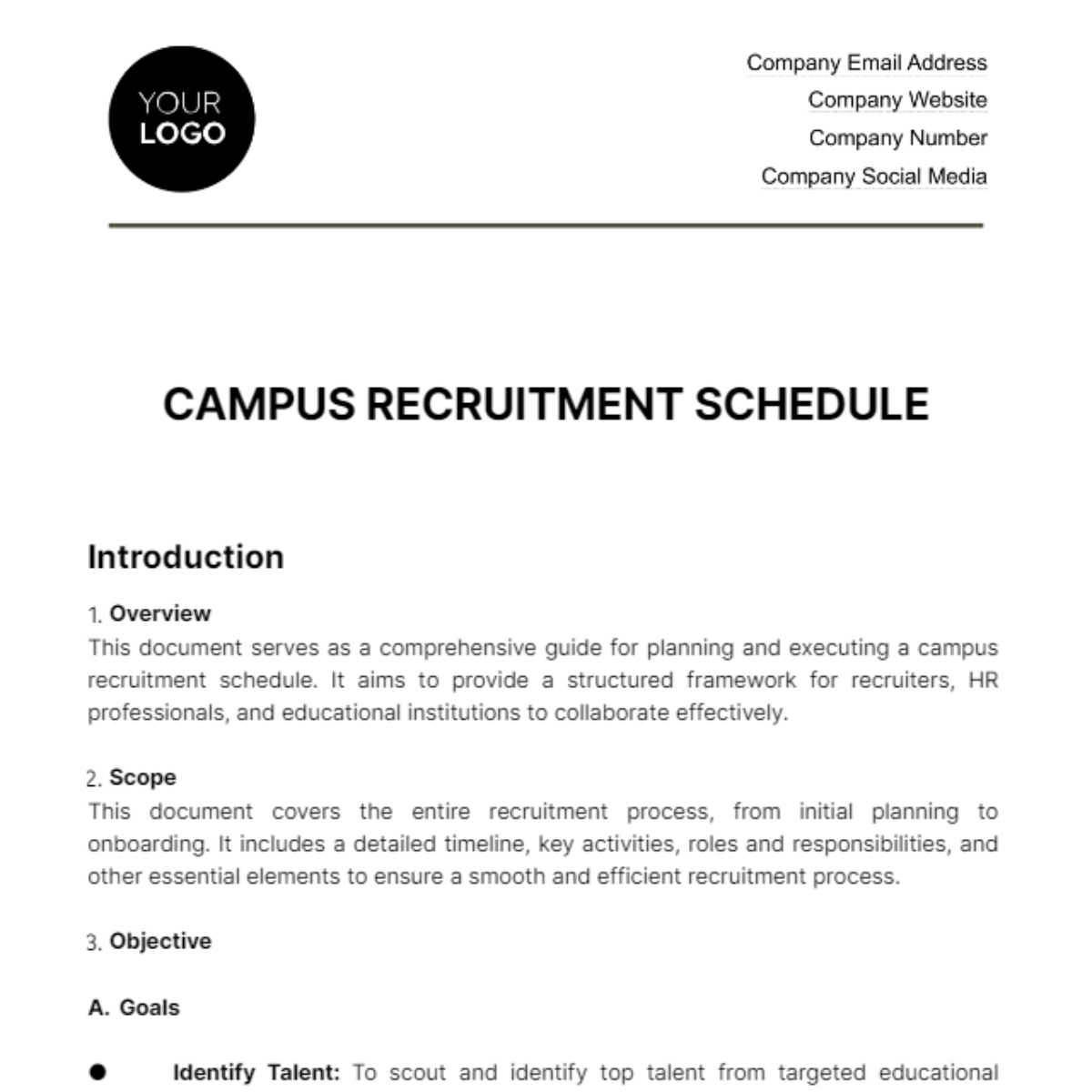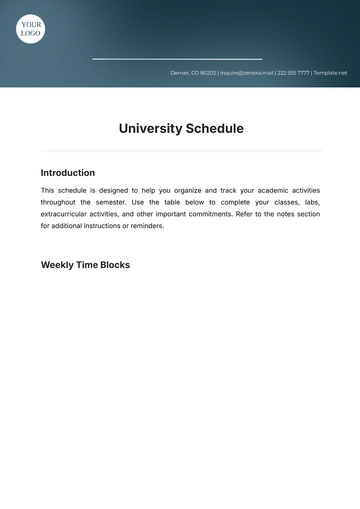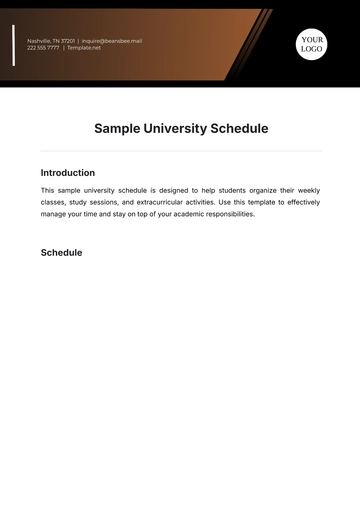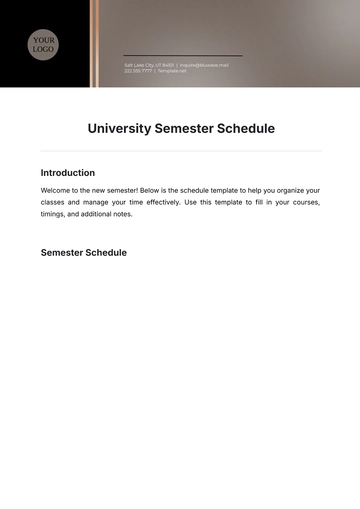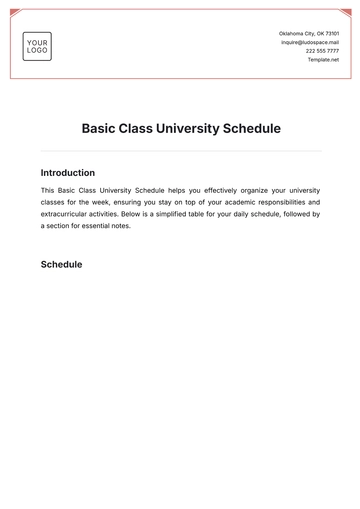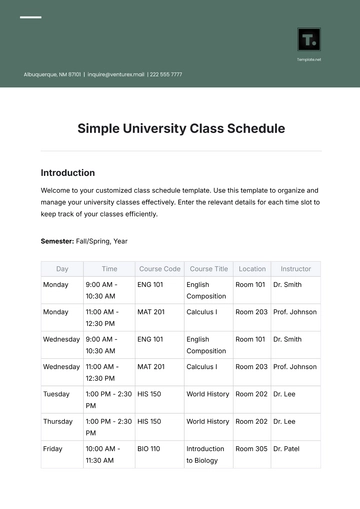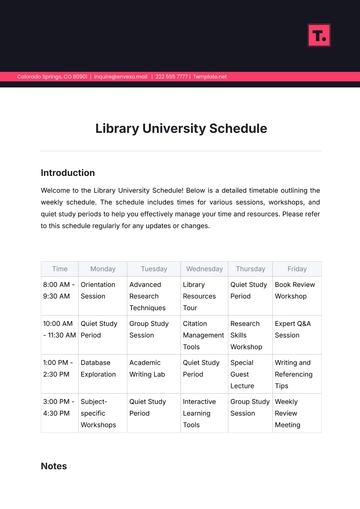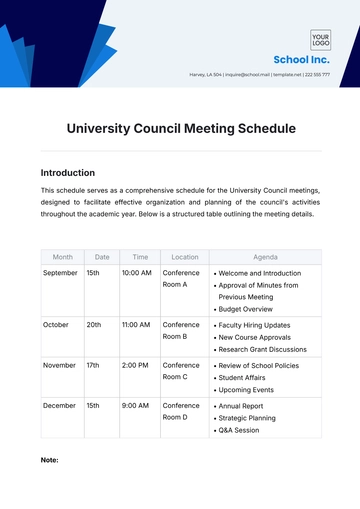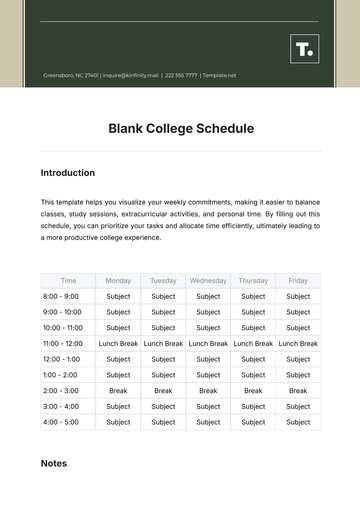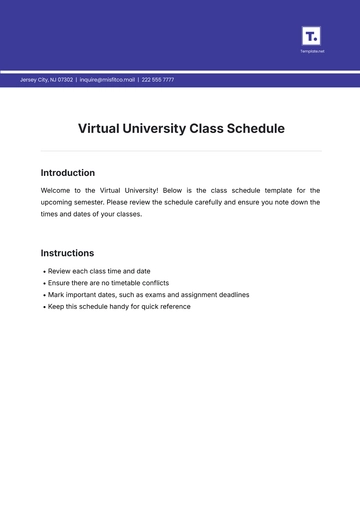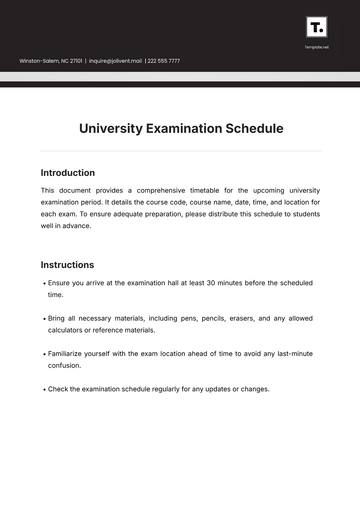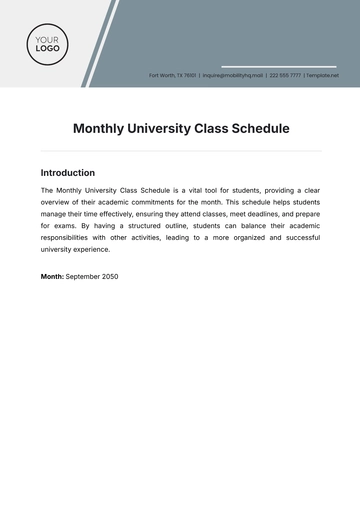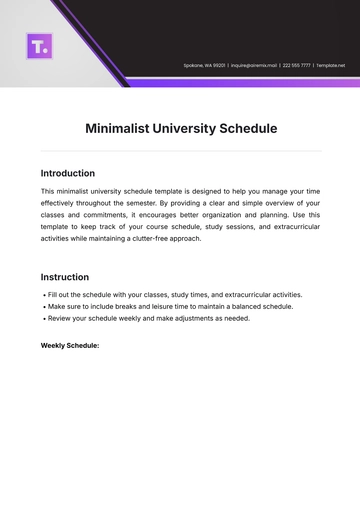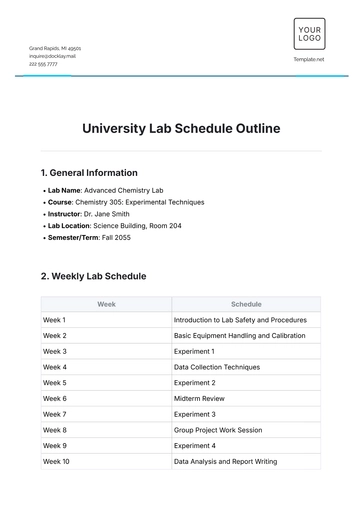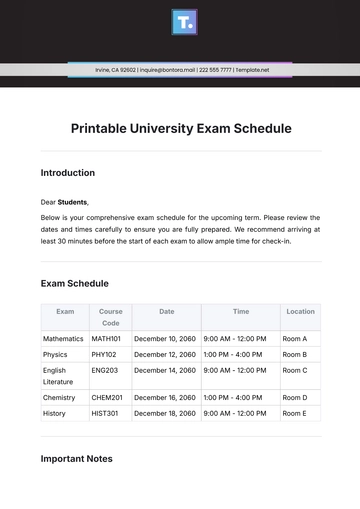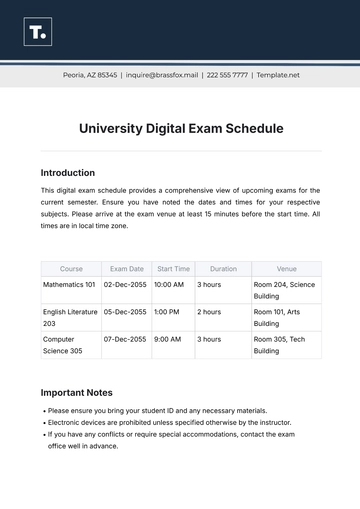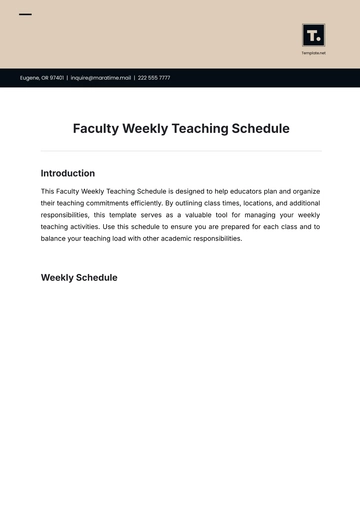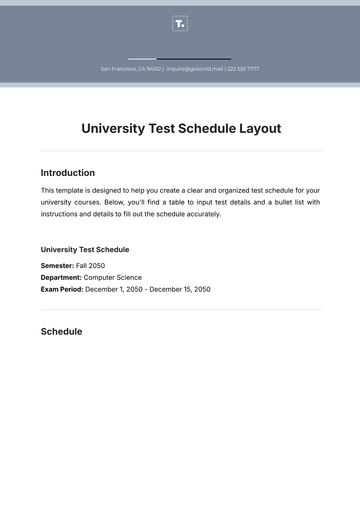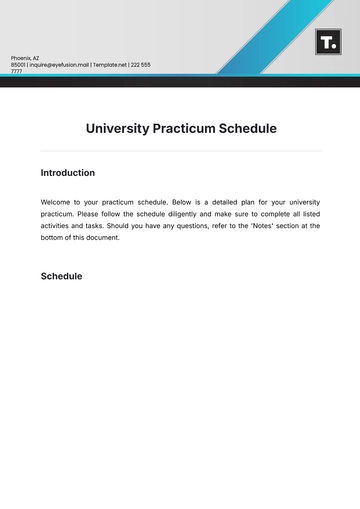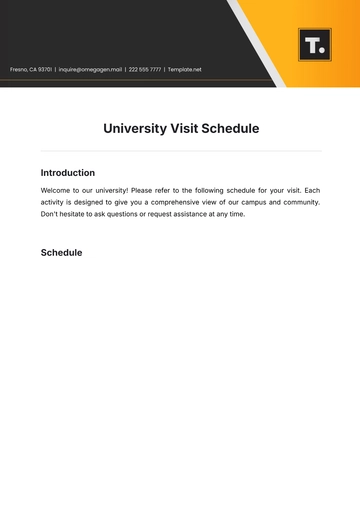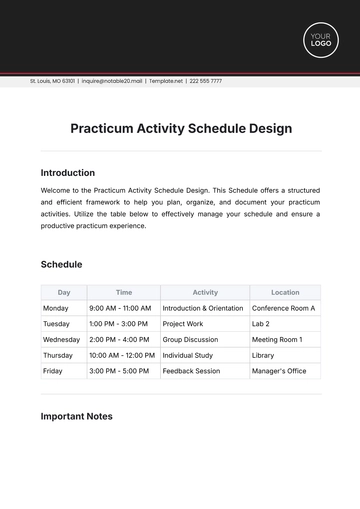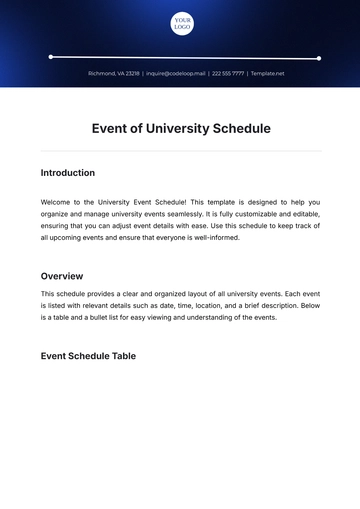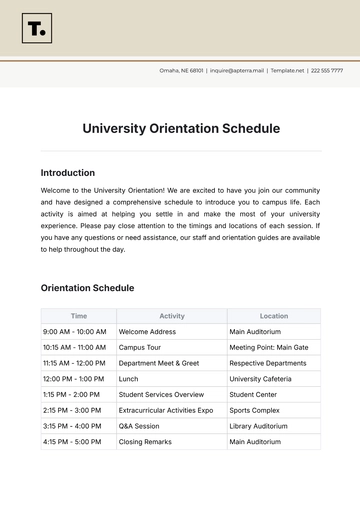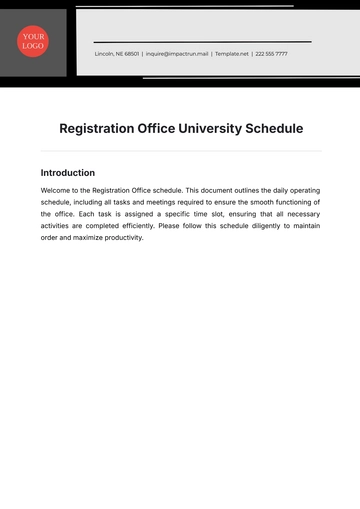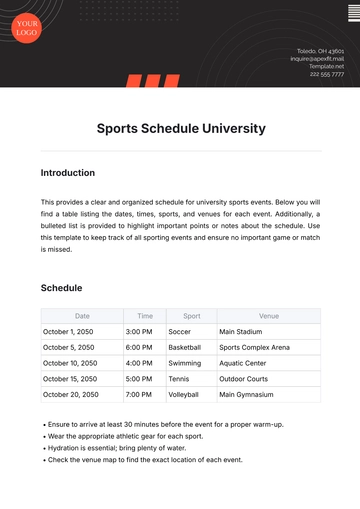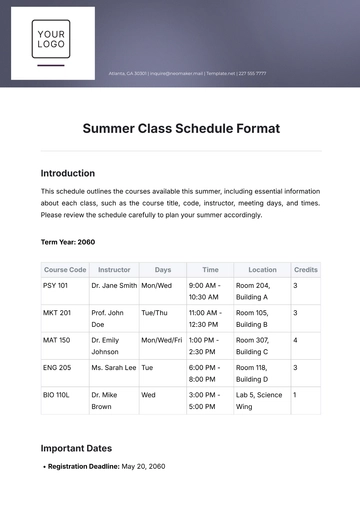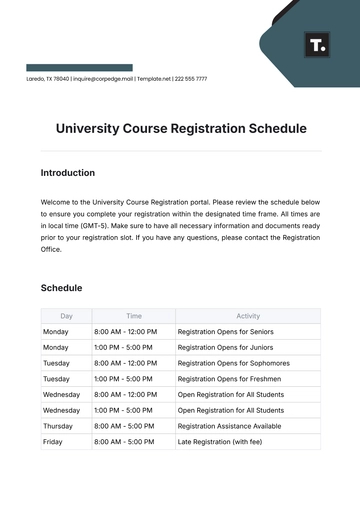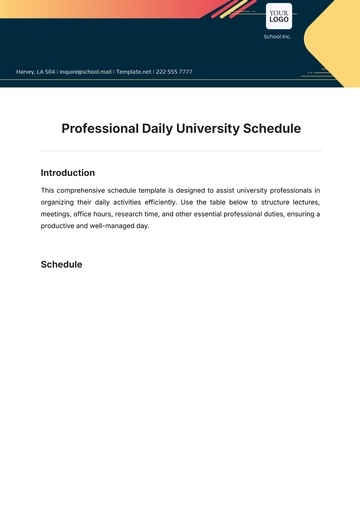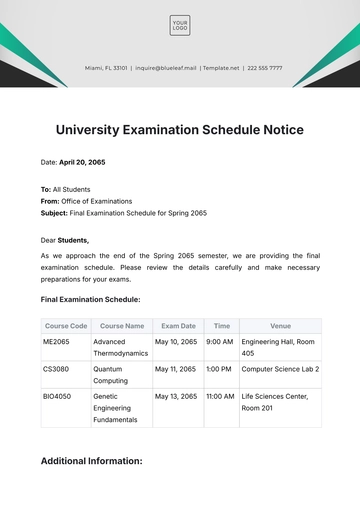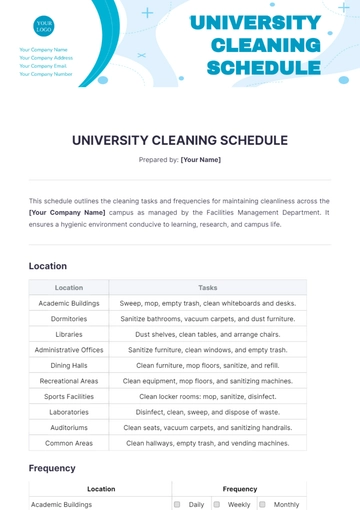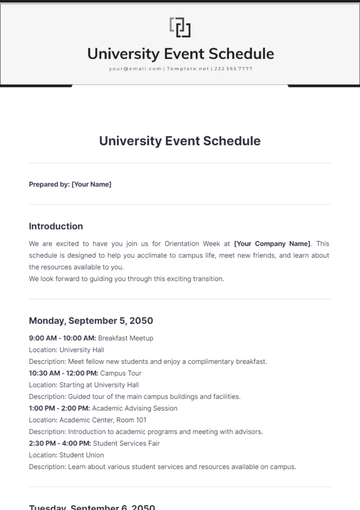CAMPUS RECRUITMENT SCHEDULE
Introduction
Overview
This document serves as a comprehensive guide for planning and executing a campus recruitment schedule. It aims to provide a structured framework for recruiters, HR professionals, and educational institutions to collaborate effectively.
Scope
This document covers the entire recruitment process, from initial planning to onboarding. It includes a detailed timeline, key activities, roles and responsibilities, and other essential elements to ensure a smooth and efficient recruitment process.
Objective
A. Goals
● Identify Talent: To scout and identify top talent from targeted educational institutions.
● Streamline Process: To make the recruitment process more efficient and effective.
● Build Relationships: To foster a strong, long-term relationship between the recruiting company and educational institutions.
B. Success Criteria
● Number of quality candidates recruited.
● Time taken for the entire recruitment process.
● Feedback from educational institutions and candidates.
Target Audience
Primary Audience
● College and University Students: Specifically, those in their final year or semester.
● Recent Graduates: Those who have graduated within the last two years.
Secondary Audience
● Career Services Offices: To facilitate the recruitment process.
● Recruitment Teams: Internal or external teams responsible for recruitment.
Timeline
The timeline is divided into five key phases, each with its own set of activities, start and end dates, and responsible parties.

Detailed Timeline
Phase | Activity | Start Date | End Date | Responsible Party |
1 | Initial Planning | August 5, 2050 | September 5, 2050 | Recruitment Team |
2 | | | | |
3 | | | | |
4 | | | | |
5 | | | | |
Key Activities
Phase 1: Initial Planning |
Market Research |
Target Institutions: Identify which colleges are target. Courses and Programs: Identify which courses or programs are most relevant to the job roles.
|
Resource Allocation |
|
Phase 2: Outreach to Institutions |
Initial Contact |
Email Outreach: Send introductory emails to career services. Follow-up Calls: Make follow-up calls to confirm interest and availability.
|
Information Session |
|
Phase 3: Campus Visits |
Career Fairs |
Participation: Participate in existing career fairs at targeted institutions. Organization: Organize a career fair if none are available.
|
Preliminary Interviews |
|
Phase 4: Interviews |
Shortlisting |
Criteria: Establish criteria for shortlisting candidates. Communication: Inform candidates who have been shortlisted.
|
Final Interviews |
|
Phase 5: Offer and Onboarding |
Job Offers |
Offer Letters: Extend formal job offers to selected candidates. Negotiations: Handle any negotiations regarding salary or benefits.
|
Onboarding |
|
HR Templates @ Template.Net
